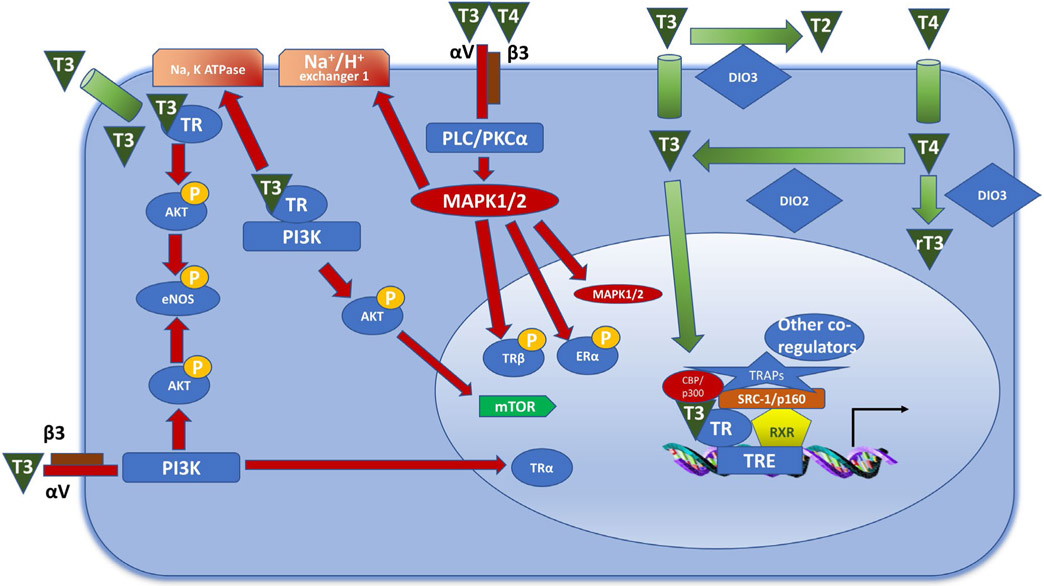FIGURE 1.
The genomic and non-genomic effects of thyroid hormones. The genomic effects of thyroid hormones are mediated by TRs. TR can act on the DNA as a homodimer or as a heterodimer with RXR, which is the more stable form. The heterodimer than localizes to thyroid response elements (TREs) that are in the promoter regions of the target genes. Following the recruitment of transcriptional co-activators (CBP/p300, SRC-1/p160, TRAPs), transcription is initiated. The non-genomic effects can be mediated by activation of plasma membrane proteins or via TRs located in the cytoplasm. Integrin αV/β3 can bind T3 and T4, leading to activation of the MAPK1/2 pathway following stimulation of PLC/PKCα. This results in trafficking of ERα and TRβ to the nucleus, and in increased activity of the sodium proton exchanger. Binding of T3 to integrin αV/β3 can also result in activation of the PI3K pathway, resulting in TRα trafficking to the nucleus. Binding of T3 to TRβ in the cytoplasm leads to Akt phosphorylation, which results in mTOR and eNOS activation. DIO, deiodinase; eNOS, endothelial nitric oxide synthase; ER, estrogen receptor; RXR, retinoid X receptor; TR, thyroid receptor; TRE, thyroid response element. Adapted from Davis et al,29 Chi et al50 and Jabbar et al51

